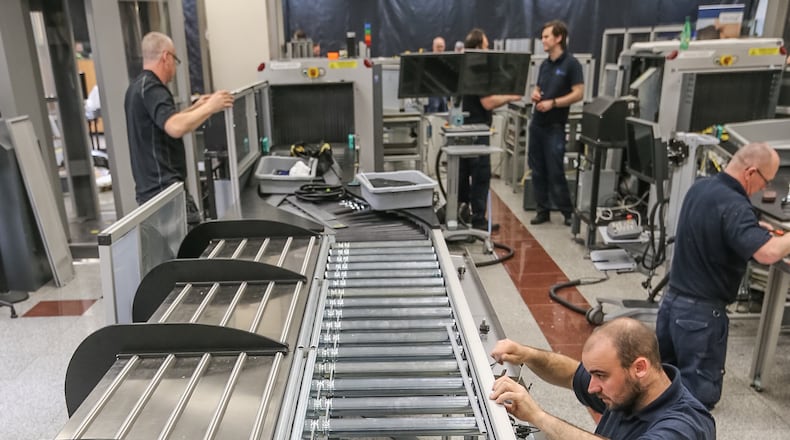With extremely long airport security lines frustrating travelers, could an automated system to move bins help to speed screening and shorten wait times at Hartsfield-Jackson International Airport?
That's what Transportation Security Administration and Delta Air Lines officials plan to test in a few weeks when they unveil two newly-designed security lanes that will feature RFID (radio frequency identification) technology.
The three-week closure of the South security checkpoint during the construction has generated lines snaking through the domestic terminal atrium and baggage claim. Wait times were more than an hour long during busy periods Monday morning.
Airport officials hope the two new lanes to open May 24 at the South security checkpoint will bring some promise of a better system that can ease bottlenecks in the security screening process.
One choke-point occurs when travelers stop up the line while sorting through their pockets or countless items in their suitcase to pull out liquids or laptops or other items.
To address that issue, the two newly designed lanes will each have five stations for five different passengers to load bins at the same time -- eliminating the need to wait for a passenger in front of you to finish loading a bin.
Credit: Kelly Yamanouchi
Credit: Kelly Yamanouchi
After loading a bin, the passenger would push it directly onto an automated conveyor system that shuttles the bin to the X-ray machine. The passenger then walks through screening.
"By having automation at the checkpoint, you should have some time savings," said TSA spokesman Mark Howell. The new design is modeled after systems used at London Heathrow and Amsterdam Schiphol airports.
If a suspicious item turns up during X-ray screening, the bin is automatically routed to a separate conveyor via an RFID tag on the bin. A TSA officer would then check the items in the bin.
Once retrieving belongings from their bins, passengers drop the empty bins onto a lower-level conveyor system that bring the bins back to the beginning of the lane. The system, similar to a bowling ball return, eliminates the need for TSA agents to manually carry bins from the end of the lane to the front of the lane.
Credit: Kelly Yamanouchi
Credit: Kelly Yamanouchi
MORE FROM THE AJC:
About the Author
Keep Reading
The Latest
Featured




